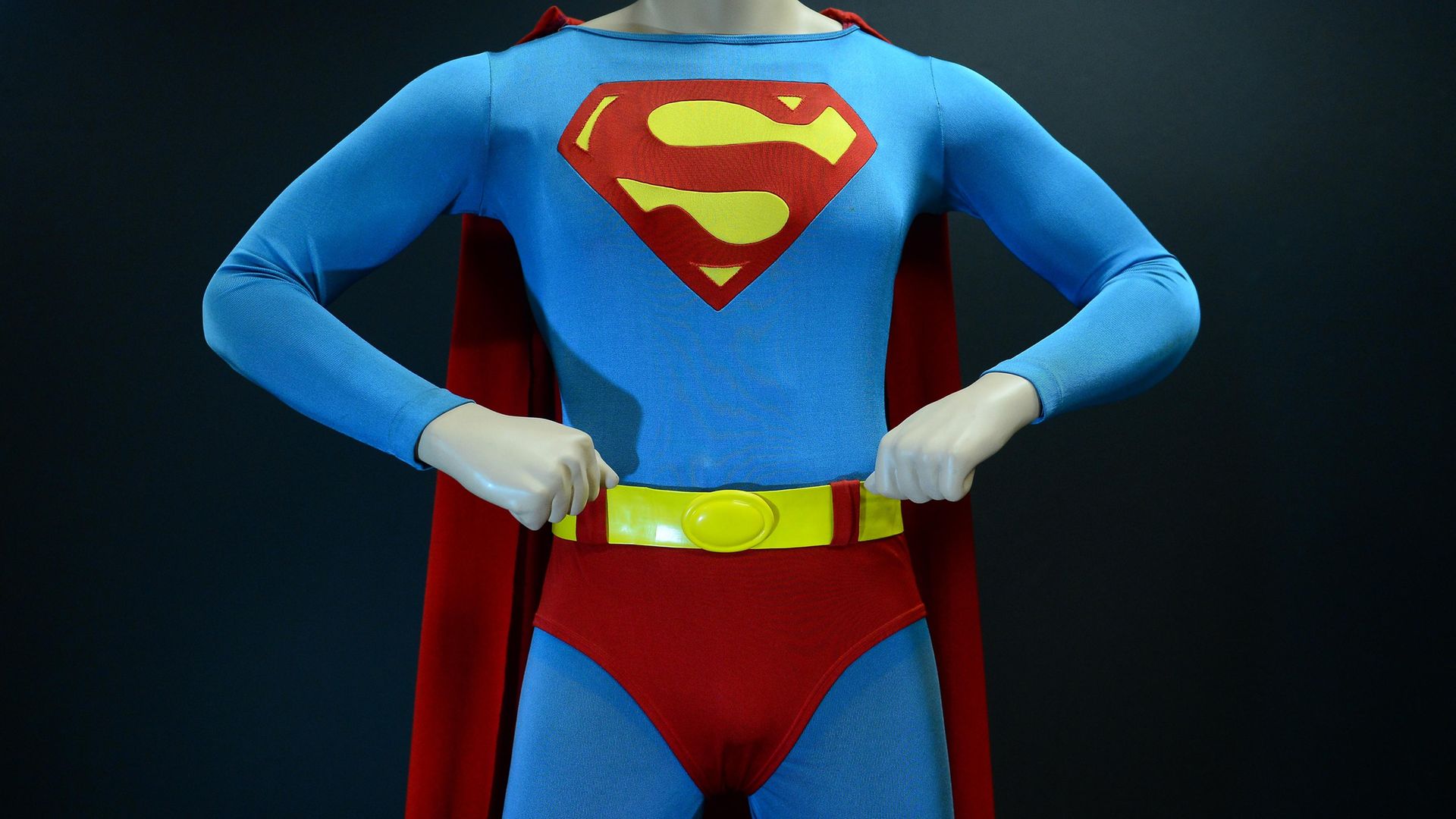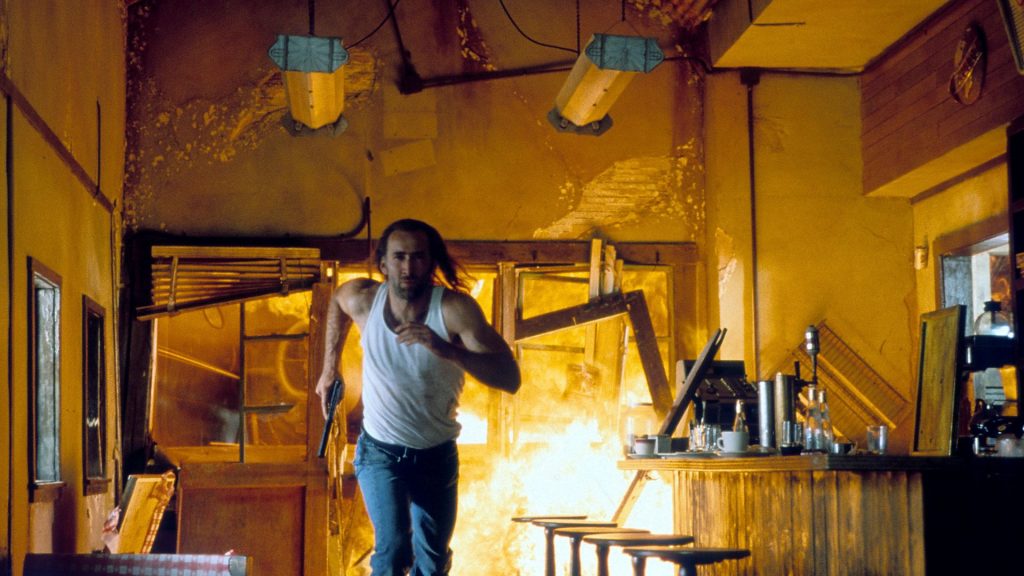
NATHAN O’HAGAN on a cinematic near-miss that would have resulted in one of Hollywood’s weirdest productions.
At this point in 2020, it sometimes feels like every other film released over the past decade is an adaptation of a comic book superhero. The all-conquering Marvel Cinematic Universe films have so far grossed over $22 billion worldwide, across 23 films. A sleekly produced, well cast and interwoven series of films has turned the Marvel movies into an unstoppable juggernaut that has enthralled fans and received largely positive reviews. Less popular with critics have been Warner Bros’ adaptations of its DC Comic properties, with most of them being deservedly mauled, but even these have made hundreds of millions of dollars each.
With new Batman, Spider-Man and other movies currently in various stages of production, the proliferation of superhero films doesn’t seem likely to end any time soon.
Back in the late 1990s, however, things were quite different. With Sam Raimi’s Spider-Man series still several years away, there was very little in the cinemas for comic book fans to get excited about. Warner’s Batman franchise, which had begun so successfully with Tim Burton’s Batman back in 1989 was, by 1997, stuttering to a halt with Joel Schumacher’s legendarily atrocious Batman & Robin. Batman wouldn’t be seen again on screen until Christopher Nolan’s franchise reboot in 2005.
Amidst what was a somewhat barren cinematic landscape for comic book movies, one idea was gestating that may well have changed how we looked at superheroes on the big screen; possibly for the worse.
Having struggled for years to bring his vision of Batman to the screen, director Tim Burton finally managed to do so in 1989, casting Michael Keaton as Bruce Wayne and Jack Nicholson as Joker. Burton’s quasi-goth sensibilities ensured an edgier Caped Crusader which baffled anyone familiar only with the camp 1960s TV show, but struck a chord with anyone whose reference points were the complex and adult graphic novels from the likes of Frank Miller and Alan Moore.
Having followed up with the even darker Batman Returns, a film that horrified the fast food companies who had licensed the film for heavy merchandising, Burton stepped aside as director, allowing Joel Schumacher to put forward his increasingly garish, child-friendly vision.
Meanwhile, DC’s other main superhero Superman hadn’t been seen on screen for almost a decade. Superman IV: The Quest For Peace, from 1987, had been a disaster on every level. With the production budget slashed practically on the eve of principal shooting, and star Christopher Reeve experiencing a baptism of fire for his first job in the director’s chair, the film was shot mostly in, of all places, Milton Keynes rather than New York, a downsizing that summed the whole sorry enterprise up.
In 1996 though, Burton was in talks with Warner’s about bringing Krypton’s favourite son back to the screen. Tentatively titled Superman Lives, Burton’s take on the man of steel would have been a typically maverick one.
The casting of Keaton in Batman over more conventional choices like Alec Baldwin and Mel Gibson initially proved controversial, but that was nothing compared to his decision to cast Nicolas Cage as the titular hero in this venture.
Though at both a critical and commercial peak having recently won an Oscar for Leaving Las Vegas and starred in hit action films like The Rock and Con Air, Cage was not someone who would have topped many lists to play Clark Kent.
An actor who has repeatedly shown himself to be capable of great sensitivity and restraint, he is just as capable of off-the-chart, unrestrained over-acting, particularly when working with a director unable or unwilling to reign him in. Given Burton’s proclivities, it’s unlikely he would have been collaborating with such a director here. Comic book fans, a uniquely precious bunch, fiercely protective of the characters they hold so dear, were instantly on a state of high-alert.
The film was to have been based on an original script by Chasing Amy director Kevin Smith, itself heavily inspired by the 1992 comic series The Death Of Superman. Once Burton came onboard as director, however, things got a lot weirder. Smith was immediately replaced as screenwriter. “Don’t blame me if Superman ends up wearing black and having scissors for fingers,” he quipped, half-jokingly, at the time, but Superman having scissor hands may have been one of the least offbeat production choices made.

In the years since, grainy footage of Cage trying on a variety of Superman costumes has emerged. While some of the costumes were not a million miles from the suit Henry Cavill would eventually wear in Zack Snyder’s Man of Steel in 2013, Cage is also seen flexing his muscles in grey, cape-less outfits, all-black numbers and moulded latex body suit abominations.
Also present was a long, straggly mane of hair, a leftover perhaps from his recent turn in Con Air, which the studio no doubt would have expected to be shorn before production began. Worryingly for them, though, their star can be seen in one clip discussing with Burton how the look was growing on him, and suggesting he might keep it.
Given this, and how much he seems to be enjoying some of the more outlandish suit options, it’s fair to assume the studio were likely to be getting the Cage of Wild at Heart and Vampire’s Kiss rather than the Cage of Leaving Las Vegas.
While most of the responsibility for the film’s leftfield direction has understandably been laid at Burton’s door, producer Jon Peters was at least as culpable for many of the more preposterous ideas.
From the start, Smith found himself working under some odd restrictions imposed upon him by Peters in their first meeting. As well as being the primary force behind dispensing with the iconic blue and red suit, Peters didn’t want Superman to be shown flying at any point in the film, forcing Smith to write him as appearing as “a red-and-blue blur”.
Not wanting to show Superman airborne seems like madness, but that wasn’t the most peculiar thing Peters wanted in the script. For reasons best known to himself, Peters insisted that, in the film’s finale, Superman should fight a giant, mechanical spider. This last point in particular seems to have been an important one for Peters as, having failed to compel Superman to do so, Will Smith was forced to battle a robot spider in the Peters-produced flop Wild Wild West in 1999. Quite what the Jungian interpretation of a fixation on robotic arachnids would be is perhaps a matter for Jon to work through with a therapist.
As pre-production progressed, costs began to escalate, not least due to the contracts signed by star and director, both of whom were given ‘pay-or-play’ deals, which ensured their fees would be honoured by the studio even if the movie wasn’t made.
If production were to grind to a halt through no fault of their own, Burton was guaranteed to receive his full $5m fee, while Cage would bank $20m, money he could use to indulge his growing predilection for buying European castles. Smith’s script had been re-written several times, and Warner Brothers were beginning to get cold feet. A confused, conflicted writing process, an unconventional star and director and escalating budget only increased the nervousness of executives who were already on edge given the mess that had been made of the Batman property. With costs already mounting up to $30m without so much as a finished script, Warner’s decided to pull the plug on this weird and potentially wonderful production.
What would have transpired had the studio kept going? Would the studios have pressured Burton to tone it down, and reigned in Cage’s more outré tendencies, or would we have been given the unfettered, garish and bizarre interpretation, with Cage in full, off-the-leash bug-eyed mode? Would Peters’ odd-seeming stipulations have been vindicated? We can only speculate as to what the result would have been, but one thing’s for sure; it would have been a good deal more interesting than Man of Steel.









